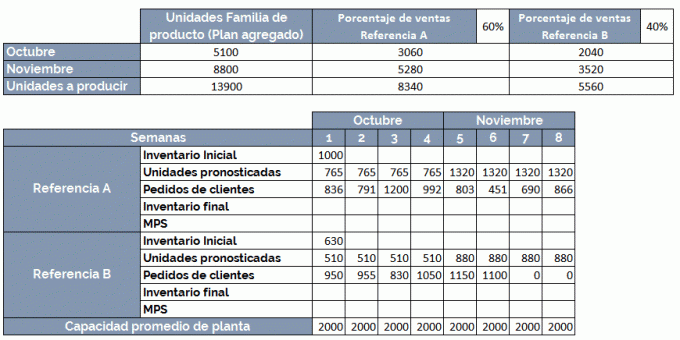A product refers to something that is generated through the production process. Within the framework of the market economy, products are all those objects that people buy and sell in order to meet their needs.
When it comes to a finished product, is when it is complete and finished. In this sense, it can be differentiated when the product is under development, finished or if it will have some modifications for some purpose.
Advertisements
This term determines an object that is intended for the final consumer. As it is a product, it does not need preparations or modifications for it to be marketed.
In this article you will find:
Objective of finished products

Advertisements
Its objective is to carry out all the activities that are inseparable from the supervision of workers and the control of products entering and leaving the warehouse, in order to guarantee the correct levels of the inventories of products.
Keys to managing the finished product
When the products have already gone through the process of transformation of raw materials, they are considered finished products, which need proper handling for the distribution procedure and consumption. For this to be carried out, the following handling keys must be taken into account:
Advertisements
Analyze the efficiency of the steps involved in handling the finished product
Warehouses and distribution centers are the appropriate places to store these products, they must be kept in the best conditions to later be distributed to customers.
For this to be accomplished, it is necessary to take into account the processes involved in the following stages, automating them as much as possible:
Advertisements
- Reception and distribution of finished products.
- Inspection, location, handling and dispatch to customers of the products.
- Warehouse maintenance.
- Inventory control.
Incorporate machinery and appropriate technology that facilitate the handling of the finished product
The handling of these products within the warehouse is much more expensive than in the manufacturing plants, since they need large tracts of space, labor, expensive equipment and computers with specific software to carry the control.
It is necessary to need the automation of processes, from the reception of the raw material, to the storage and shipment of the product that is already finished. It is important to incorporate productivity in the different storage and withdrawal systems, as well as the appropriate machinery and equipment for this.
Advertisements
Similarly, the provision of a system that facilitates its inspection, sampling and control through technological innovation is recommended, such as:
- Reading barcodes, optical and magnetic.
- Radiofrequency that facilitate the control of the stock and the rationalization of activities to reduce documentation and operating costs.
- Portable terminals and computers.
Choosing effective finished product packaging alternatives
Efficient packaging improves product storage, use and handling, as well as allowing better use of transport equipment, product protection and offers reuse value to the client. Some tips to make a perfect packaging are:
- Condition and close the packages properly to avoid damage or loss of the content.
- Avoid forming dangerous combinations that could damage the content materials.
- The packaging and closures have to be resistant and solid.
- They must be reusable and lightweight, but have the ability to withstand the necessary load.
How to keep an efficient inventory control of the finished product
In order to have an efficient control of raw materials, products in process and those that are already finished, it is necessary that the warehouse be properly organized and managed. In that case, some tips such as those shown below should be taken into account so that it is done correctly:
- A detailed inventory is made of all the merchandise in the warehouse, specifying the type and quantity.
- A work area must be chosen to classify the merchandise previously, when entering the specific spaces for each product.
- Goods should be grouped according to weight and rotation.
- It is important to visibly identify each item by means of coded labels that indicate information about each product.
- When an inventory is organized through warehouse management systems, it allows the information to be easily consulted at the time it is needed.
Currently, technological advances have allowed the emergence of new markets as a result of the creation of different types of products that were not accepted in any category in the past.
Computer programs, video games and music are examples of products that came to need their own space within the industry. Their differences are reflected in their production, although they begin in the elaboration continuing with the distribution.


